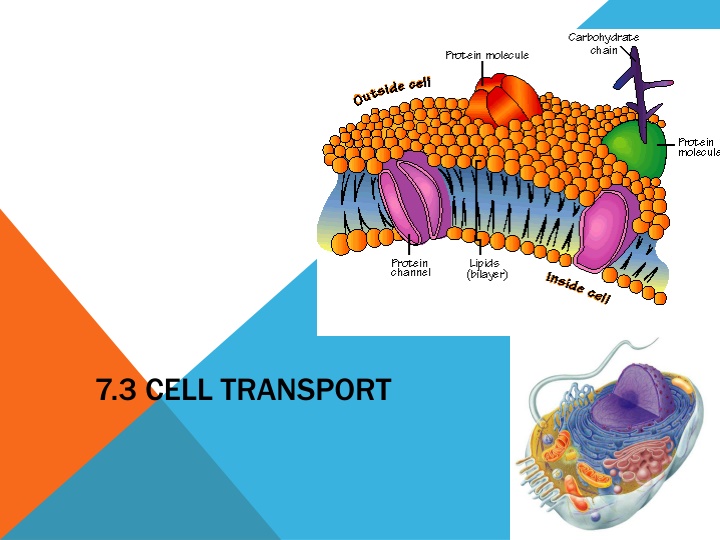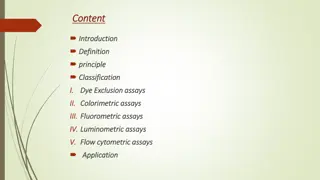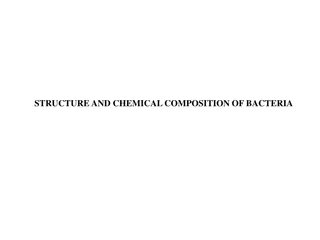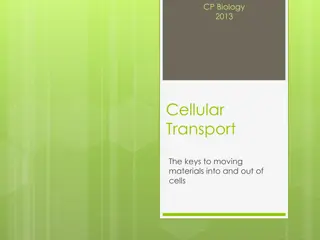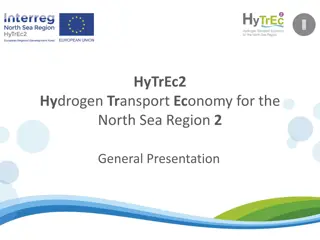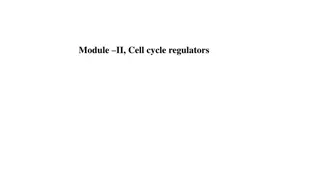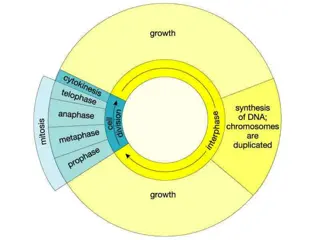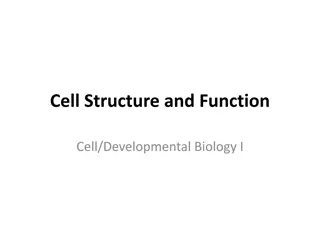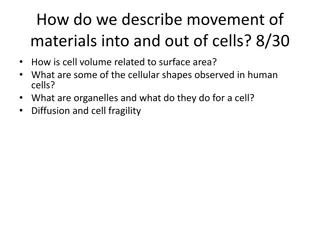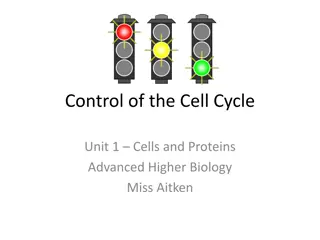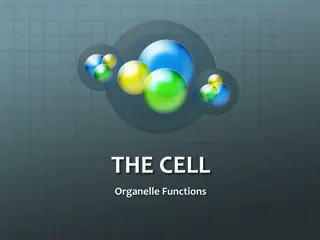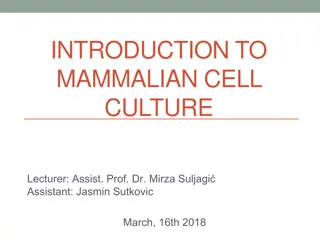7.3 CELL TRANSPORT
The cell membrane plays a crucial role in maintaining homeostasis by regulating the flow of materials in and out of the cell. Passive transport processes like diffusion, osmosis, and facilitated diffusion move molecules across the membrane without requiring energy. Learn about hypertonic, hypotonic, and isotonic solutions affecting cell behavior.
Download Presentation

Please find below an Image/Link to download the presentation.
The content on the website is provided AS IS for your information and personal use only. It may not be sold, licensed, or shared on other websites without obtaining consent from the author.If you encounter any issues during the download, it is possible that the publisher has removed the file from their server.
You are allowed to download the files provided on this website for personal or commercial use, subject to the condition that they are used lawfully. All files are the property of their respective owners.
The content on the website is provided AS IS for your information and personal use only. It may not be sold, licensed, or shared on other websites without obtaining consent from the author.
E N D
Presentation Transcript
7.3 CELL TRANSPORT 2006-2007
Function of the Cell Membrane: Cell membrane separates the components of a cell from its environment surrounds the cell Regulates the flow of materials into and out of cell selectively permeable Cell membrane helps cells maintain homeostasis stable internal balance
Passive Transport A process that does not require energy to move molecules from a HIGH to LOW concentration Diffusion Osmosis Facilitated Diffusion
Diffusion is the movement of small particles across a selectively permeable membrane until equilibrium is reached. These particles move from an area of high concentration to an area of low concentration. outside of cell inside of cell
DIFFUSION DIFFUSION
Osmosis is the diffusion of water through a selectively permeable membrane. Water diffuses across a membrane from an area of high concentration to an area of low concentration. Semi-permeable membrane is permeable to water, but not to sugar
Facilitated Diffusion is the movement of larger molecules like glucose through the cell membrane larger molecules must be helped Proteins in the cell membrane form channels for large molecules to pass through Glucose molecules outside of cell inside of cell
Hypertonic Solutions: contain a high concentration of solute relative to another solution (e.g. the cell's cytoplasm). When a cell is placed in a hypertonic solution, the water diffuses out of the cell, causing the cell to shrivel. Hypotonic Solutions: contain a low concentration of solute relative to another solution (e.g. the cell's cytoplasm). When a cell is placed in a hypotonic solution, the water diffuses into the cell, causing the cell to swell and possibly explode. Isotonic Solutions: contain the same concentration of solute as another solution (e.g. the cell's cytoplasm). When a cell is placed in an isotonic solution, the water diffuses into and out of the cell at the same rate. The fluid that surrounds the body cells is isotonic.
Active Transport Active transport is the movement of molecules from LOW to HIGH concentration. Energy is required as molecules must be pumped against the concentration gradient. Proteins that work as pumps are called protein pumps. Ex: Body cells must pump carbon dioxide out into the surrounding blood vessels to be carried to the lungs for exhale. Blood vessels are high in carbon dioxide compared to the cells, so energy is required to move the carbon dioxide across the cell membrane from LOW to HIGH concentration. Carbon Dioxide molecules outside of cell inside of cell
High High Low Low
Endocytosis and Exocytosis is the mechanism by which very large molecules (such as food and wastes) get into and out of the cell Food is moved into the cell by Endocytosis Wastes are moved out of the cell by Exocytosis
Ex: White Blood Cells, which are part of the immune system, surround and engulf bacteria by endocytosis
WHAT IS THE DIFFERENCE BETWEEN PASSIVE AND ACTIVE TRANSPORT? Passive requires no energy and moves from high Passive requires no energy and moves from high to low to low Active requires energy and moves from low to Active requires energy and moves from low to high. high.
IN A HYPOTONIC SOLUTION A. A. Cell shrivels up Cell shrivels up B. B. Cell swells up Cell swells up C. C. Remains the same Remains the same
IN A HYPERTONIC SOLUTION A. A. Cell shrivels up Cell shrivels up B. B. Cell swells up Cell swells up C. C. Remains the same Remains the same
FOOD IS MOVED OUT OF THE CELL BY THE PROCESS OF A. A. Phagocytosis Phagocytosis B. B. Exocytosis Exocytosis C. C. Endocytosis Endocytosis
